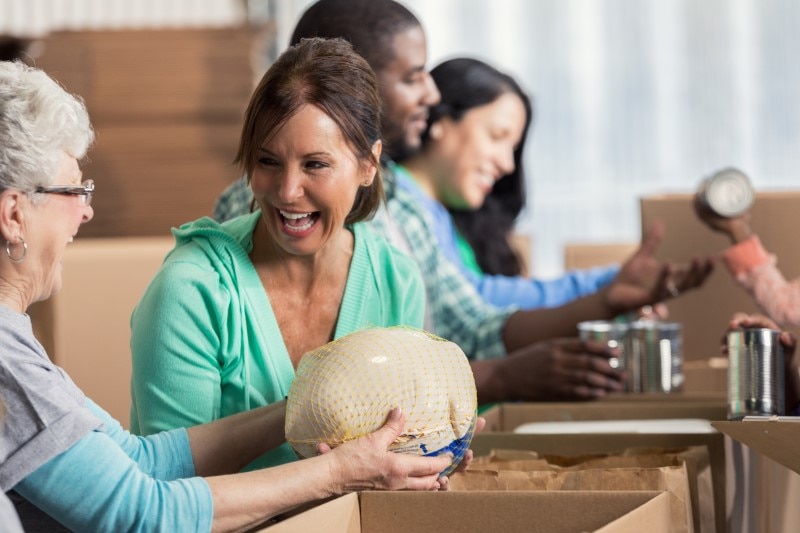
Thanksgiving is a time when many people give back, including volunteering to prepare holiday meals or donating food to those who are less fortunate. This is also a time when people are handling and receiving food in unfamiliar settings. Improper food handling has led to past foodborne illness outbreaks during the holiday season. Those handling food in a different kitchen or preparing food in a new way must be even more aware of basic food safety practices to prevent illness outbreaks.
When helping to prepare foods for others or donating foods
- Start with the basics: Wash your hands before preparing foods and after handling any raw meat, poultry, seafood, or eggs. When in doubt, wash your hands by wetting with water, adding soap and lathering and then scrubbing together for 20 seconds.
- “New to You” Appliances: If you’re working in a kitchen you are not familiar with, take some time to find essential tools and equipment such as a food thermometer. Cooking times will likely be slightly different with different ovens, so a food thermometer is your best bet to know when your meat and poultry are done cooking. Check the temperature of the refrigerator too! Using an appliance thermometer in the refrigerator will let you know the exact temperature, which should be 40°F (4°C) or below.
- Time and Temperature: If foods are to be delivered or served hot, keep them at 140°F (60°C) or above. Keep refrigerated foods and foods served cold at 40°F (4°C) or below. Never let foods sit in the bacteria danger zone (40°F (4°C) - 140°F (60°C)) for more than two hours. If the food is exposed to temperatures above 90°F (32°C) (like a hot car or summer picnic), refrigerate it within 1 hour.
When receiving foods
- Check the labels: Carefully read labels to determine how the food needs to be handled. Follow any instructions that may be on the label. If the label does not clearly indicate the food is fully cooked, then it should be handled like it is raw and it must be cooked to a safe internal temperature.
- Safe Travels: If foods are received cold, keep them cold by placing in small shallow containers and refrigerating. If you need to travel with an entire turkey it is best to break the whole turkey into smaller pieces and then travel with it in a cooler. This will help the meat stay below 40°F (4°C) for as long as possible.
- Reheat to 165°F (74°C): For maximum safety, leftover food should be reheated to 165°F (74°C). Certain individuals, such as children under 5 years of age, people with cancer and adults over 65 years of age, are at an increased risk of foodborne illness and should always reheat leftover food to 165°F (74°C).
For food safety questions, contact the USDA Meat and Poultry Hotline at 1-888-MPHotline (1-888-674-6854) or email MPHotline@usda.gov from 10 a.m. to 6 p.m. Eastern Time, Monday through Friday.
You can also visit FoodSafety.gov to learn more about how to safely select, thaw and prepare a turkey. For more Thanksgiving food safety tips, follow us on X @FoodSafetygov or on Facebook at Facebook.com/FoodSafety.gov.

